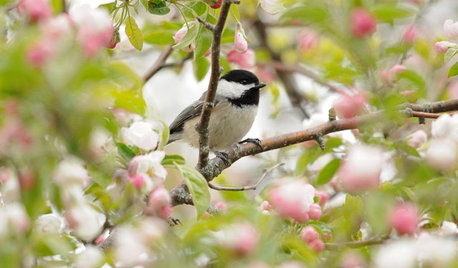The Ladie Are Here--What Else Have You Spotted?
susanlynne48
19 years ago
Related Stories

ARTHere’s Looking at You: Supersize Portraiture at Home
Go big. Go bold. Hang huge portraits on blank walls for maximum impact
Full Story
BATHROOM DESIGNSpotted: Refrigerators in the Bathroom
You read that right. Before you protest, here are seven good reasons why people are chilling in the bath
Full Story
MOVINGRelocating? Here’s How to Make the Big Move Better
Moving guide, Part 1: How to organize your stuff and your life for an easier household move
Full Story
SPRING GARDENINGSpring Gardens Are Waking — Here’s What to Do in March
Excitement fills the air when gardens come back to life. These guides will help you make the most of yours
Full Story
ANTIQUESInherited an Antique? Here’s How to Work It Into Your Home
Find out how to make that beloved vintage piece fit in with your decor
Full Story
DECORATING GUIDESHere's How to Steer Clear of 10 Top Design Don'ts
Get interiors that look professionally styled even if you're taking the DIY route, by avoiding these common mistakes
Full Story
KITCHEN DESIGN12 Items Worth a Spot on Your Kitchen Counter
Keep these useful tools and accessories out in the open to maintain high function without spoiling the view
Full Story
HOUZZ TVHouzz TV: A Famed ‘Painted Lady’ Gets a Gorgeous Update
Join us as we walk with the homeowners through one of San Francisco's landmark Victorians, lovingly restored
Full Story
HOUZZ TOURSHouzz Tour: Three Men and a Lady's DIY Paradise
One Handy Mom Takes Her Home from Blah and Beige to Bold and Beautiful
Full Story
GARDENING GUIDES6 Native Ground Covers for Tough, Dry Spots
Sun beating down on your sandy gravel? Thick shade darkening your clay soil? There’s a ground cover here for you
Full Story


Okiedawn OK Zone 7
OKC1
Related Discussions
where else can you have this much fun for 50 cents
Q
Silver-Spotted Skipper and American Lady? Caterpillar Nests
Q
'Spotted Lady' Beans?
Q
Do you have this problem with 'The Lady Gardener'?
Q
Tomato_Worm59
susanlynne48Original Author
heidibird
Okiedawn OK Zone 7
heidibird
Okiedawn OK Zone 7
heidibird
Okiedawn OK Zone 7
susanlynne48Original Author
Okiedawn OK Zone 7
heidibird
broken_lady
Okiedawn OK Zone 7
susanlynne48Original Author
Okiedawn OK Zone 7
susanlynne48Original Author
Okiedawn OK Zone 7
susanlynne48Original Author
Okiedawn OK Zone 7